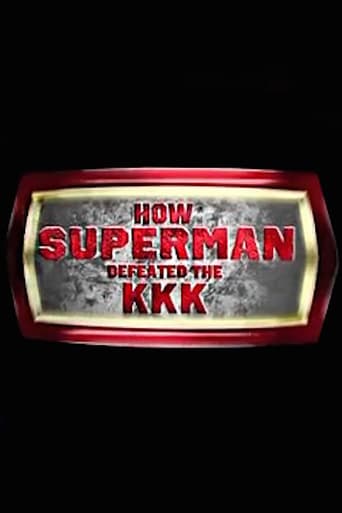

The title of this documentary almost sounds like it might have been a comic book story, but in fact it was a revealing portrait of a man who fought against the corruption and lawlessness of the Ku Klux Clan in the mid-1940's. The man was Stetson Kennedy, born to a well to do family in 1916, who grew up in the South amid racist views against Blacks that even members of his own family held. When he witnessed a black caretaker who helped raise him get beaten with chains, it was a defining moment that launched his determination to become a one man Army against the KKK.At great personal risk, Stetson decided that the only way to expose the corrupt tactics of the Klan was to go on the inside. Posing as an uncle who had a prior history as a Klan member, Kennedy assumed the name of John S. Perkins, and gradually became accepted as a member of an Atlanta chapter in 1946. From there, he began offering information on Klan activities to local authorities and the FBI, but much of his input was disregarded. Frustrated, Kennedy hit upon an idea to call the producers of the Superman radio program to enlist the super-hero in a new fight for justice now that the Second World War was over.On June 18th, 1946, the first of sixteen episodes of the radio serial "The Clan of the Fiery Cross" was unveiled, listened to by millions of kids across the country. What was hoped for turned out to be true, youngsters began enlisting their parents to speak out against the Ku Klax Klan, who started demanding that authorities begin to combat their activities at various levels of government. One irony of the project was that the children of Klan members who heard the radio broadcasts were also reacting to the programs, which exposed the fraud perpetrated by the Klan and painted the group as small minded idiots who engaged in secret handshakes, code words and rituals that made them look foolish. The pointy headgear which at one time inspired fear was now looked at as clownish and those who wore them buffoons. Klan membership began to tail off considerably as a result, as dedicated civic leaders rose to speak out against racism as well.Eventually the KKK discovered the identity of the 'traitor' in their midst, and Stetson Kennedy had to end his masquerade. However the damage was done, and Kennedy continued to receive the occasional death threat from former Klan members up until his passing in 2011 at the age of ninety four. A highlight of the documentary was a segment with Kennedy himself discussing his anti-KKK activities, well advanced in age but revealing the determination he held as a crusader against racism all his life.
... View More